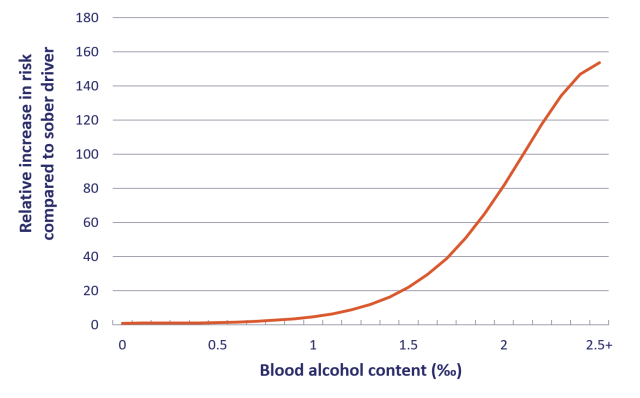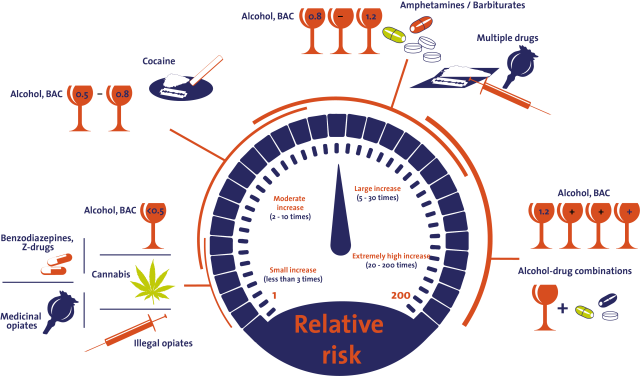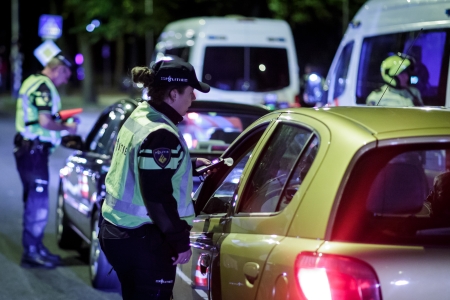Cars and delivery vans
The risk of a crash increases with the amount of alcohol a driver has drunk. A large-scale American case control study shows that at a blood alcohol content (BAC) of 0.5‰, crash risk is approximately 1.4 times higher than when no alcohol has been consumed. At a BAC of 1.0‰, the risk is just over four times higher, and at a BAC of 1.5‰, the risk of a crash is more than twenty times as high as that for a sober driver (see Figure 2; [20]).

Figure 2. Relative increase in risk at increasing blood alcohol content (Blomberg et al., 2005; Table 33 [20]).
Other studies show that even at a BAC lower than 0.5‰, crash risk is adversely affected. Compton & Berning [21] report a 1.2 risk increase for all drivers having a BAC of 0.3‰. Lower BAC levels mainly involve a risk increase for young (inexperienced) drivers. For example, Peck et al. [22] report a risk increase of 1.4 for drivers under 21 at a BAC of 0.1 to 0.3‰.
Cyclists
For cyclists, crash risk increases with alcohol consumption. In Canada, Asbridge et al. [23] found bicycle crash risk to increase four times after alcohol consumption. The risk increase was established during different kinds of alcohol measurements: both questionnaire measurements and blood value measurements resulted in the same risk increase.
Combination alcohol & drugs: extra high risk
Combining drugs and alcohol results in a risk increase comparable to driving under the influence with a BAC higher than 1.2 ‰, which can be labelled an extremely increased risk. The risk of being seriously or fatally injured in a crash is 20 to 200 times higher than under normal driving conditions. The range is that wide because the different risk estimates vary, depending on the European country in which the research was carried out, the type of drugs used, and the risk outcome used (the risk of death or the risk of serious injury).
The findings above are derived from a large-scale European study into driving under the influence of alcohol, drugs and medicines in the period 2007-2009 (DRUID: Driving Under the Influence of Drugs, Alcohol and Medicines [24]). Figure 3 shows the results of this research for the increase of crash risks for the separate use of alcohol and the combined use of alcohol and drugs. As the study was conducted in 2007-2009, it concerns combinations that were common in traffic at that time.

Figure 3. Relative risk of severe or fatal injury due to the use of psychoactive substances in traffic [24].
